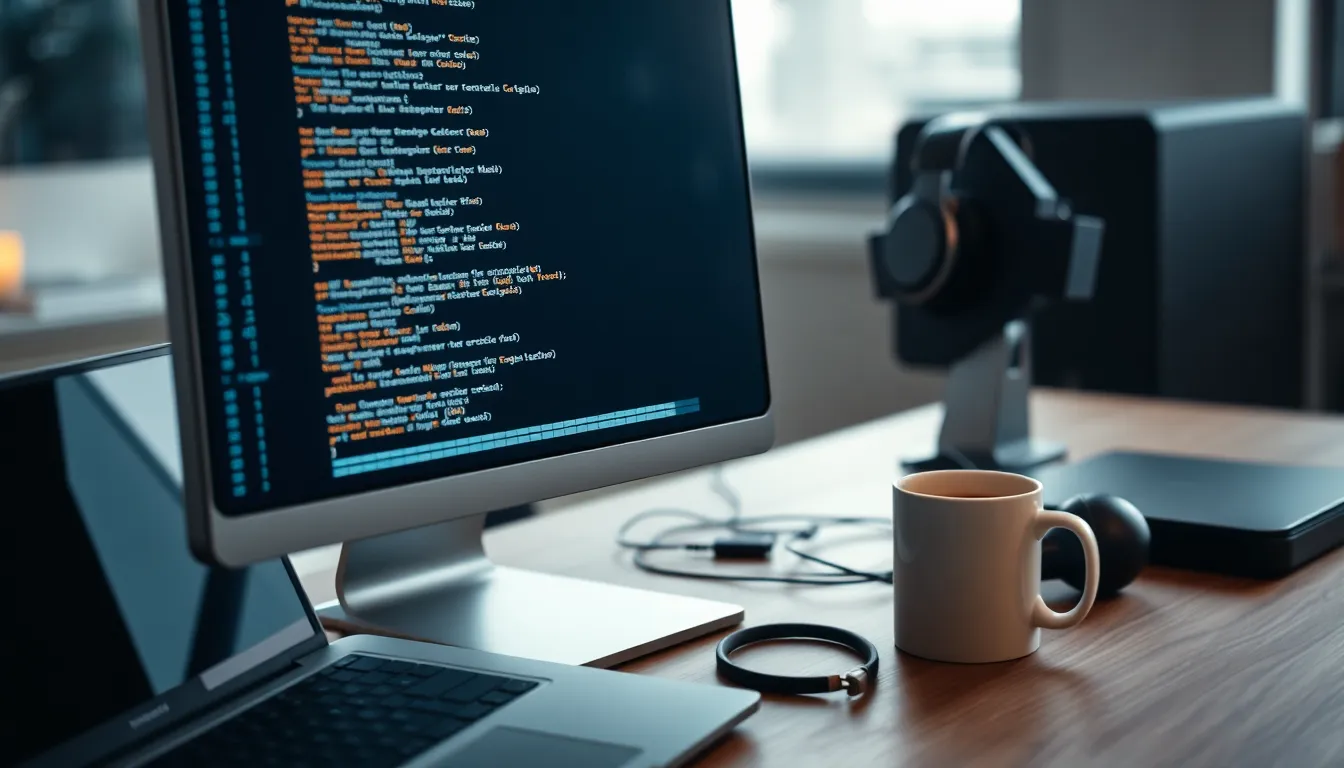Is your iPhone playing hide and seek with you, turning on and off like a moody teenager? You’re not alone. Many users find themselves in a love-hate relationship with their devices, especially when they decide to take a spontaneous nap right when you need them most. It’s frustrating, and let’s be honest, it can feel like your phone’s auditioning for a role in a horror movie.
Table of Contents
ToggleCommon Reasons for iPhone Turning On and Off
iPhones can unexpectedly turn on and off due to several issues. Understanding these common reasons may help users identify and resolve the problem more easily.
Battery Issues
Battery problems frequently cause iPhones to power cycle. Worn-out batteries lose their ability to hold a charge effectively. An iPhone that powers off suddenly may signal a battery that needs replacement. Checking the battery health can provide insights into its condition. Users should monitor charging habits, as poor-quality chargers can lead to similar issues.
Software Glitches
Software glitches often lead to unexpected shutdowns. Outdated software can cause compatibility issues with apps or operating system functions. Performing a simple restart sometimes resolves these temporary issues. Users should also consider updating their iOS version to improve stability. Resetting settings or restoring the device may provide further relief if problems persist.
Hardware Problems
Hardware problems can complicate the iPhone’s performance. Faulty components such as the logic board may result in frequent reboots. A device that has suffered physical damage can also exhibit these symptoms. Contacting a professional technician for a thorough examination is advisable. Repairing or replacing damaged parts often restores functionality.
Troubleshooting Steps
When an iPhone turns off and on unexpectedly, following specific troubleshooting steps can help resolve the issue.
Restart Your iPhone
Restarting the device often clears temporary glitches. Press and hold the power button along with the volume button until the slider appears. Drag the slider to power off the iPhone. After waiting for about 30 seconds, turn the phone back on by pressing the power button again. This simple process can restore functionality when software issues interfere with performance.
Update iOS
Updating iOS ensures the device runs on the latest software. Navigate to Settings and tap on General. From there, select Software Update. If an update is available, downloading and installing it can fix bugs that lead to unexpected shutdowns. Keeping iOS updated provides not only new features but also important security patches and performance enhancements.
Check Battery Health
Battery health significantly affects an iPhone’s performance. Go to Settings and then Battery, where you’ll find Battery Health. If the maximum capacity is below 80%, consider replacing the battery. Replacing a worn-out battery can prevent unexpected shutdowns and improve overall device stability. Monitoring battery health regularly helps maintain optimal performance.
Advanced Solutions
Advanced troubleshooting steps can help resolve persistent iPhone issues related to unexpected shutoffs. Users can consider several effective methods.
Restore Your iPhone
Restoring the iPhone can resolve deep-rooted software problems. This process involves erasing all content and settings, ensuring no glitches remain. Users need to back up data before starting, as this method will delete everything from the device. After creating a backup, connect the iPhone to a computer and open iTunes or Finder. Selecting the device in the software allows users to choose the “Restore” option. Following prompts completes the process, potentially restoring the device to optimal functionality.
Check for Overheating
Overheating can cause the iPhone to shut down unexpectedly. Device users should monitor temperature during use, especially when running intensive applications or charging. If the iPhone feels warm, taking breaks can prevent overheating. Switch to low-power mode to reduce battery strain and heat generation. Environmental factors, such as exposure to direct sunlight, can also worsen overheating. Keeping the phone in cooler conditions enhances performance and may reduce shutdown occurrences.
Examine Physical Damage
Physical damage may contribute to frequent shutdowns. Users should examine the iPhone for cracks, screen damage, or components that appear out of place. A damaged battery can lead to unexpected performance issues, requiring replacement. Inspecting the charging port for debris or damage is crucial, as it impacts charging efficiency. If external damage is detected, professional repairs can restore proper functioning and prevent further issues. Seeking assistance from authorized service providers ensures quality repairs and reliable solutions.
When to Seek Professional Help
Persistent shutdowns may indicate severe underlying issues. Unresolved problems despite following troubleshooting steps warrant a visit to a professional. Damaged components can lead to ongoing malfunctions. Noticing signs like swelling batteries or cracks suggests it’s time for expert assessment.
Accessing specialized tools and knowledge greatly aids diagnosis. Technicians are trained to handle complex hardware problems efficiently. If battery health consistently shows below 80%, replacement often becomes necessary for optimal performance. Complications arising from software issues, including systemic errors, may require professional intervention after basic fixes have failed.
Users should remember that unauthorized repairs could void warranties. Seeking help from authorized service providers ensures compliance with manufacturer standards. Documentation of any work done also assists in maintaining device history, which is useful for future repairs.
Based on the device’s symptoms, quick action can prevent further damage. Ignoring problems can lead to heavy expenses or irreversible issues down the line. By prioritizing professional help under these circumstances, users maximize the lifespan of their devices.
Dealing with an iPhone that turns on and off unexpectedly can be incredibly frustrating. By following the troubleshooting steps outlined in the article users can often resolve these issues without much hassle. Regularly checking battery health and keeping the software updated are essential practices for maintaining device performance.
When problems persist it’s wise to seek professional assistance to avoid further complications. Authorized service providers have the expertise to address underlying hardware issues effectively. Taking prompt action can not only enhance the device’s performance but also extend its lifespan, ensuring that users stay connected without interruption.






